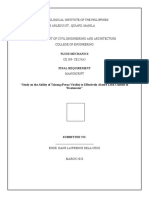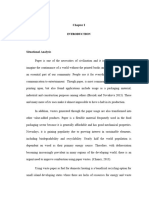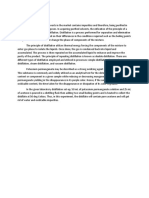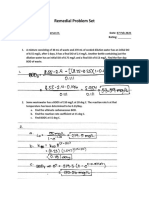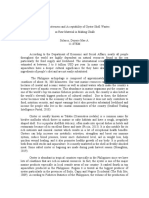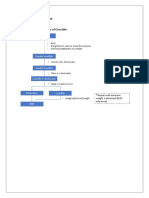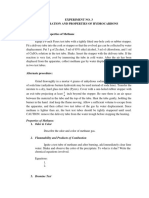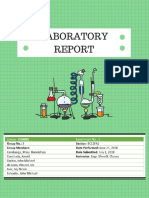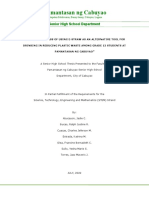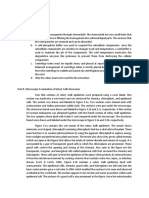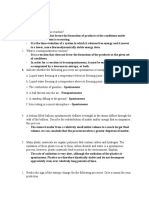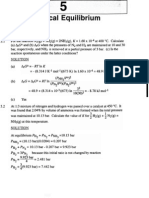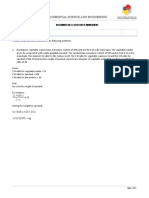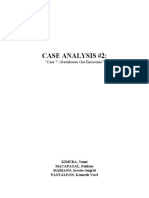100% found this document useful (1 vote)
212 views2 pagesE 3.7 Solid Waste Management - Kimura
This document contains 3 practice problems related to solid waste management. Problem 1 asks the reader to determine the weight of sawdust needed to achieve a C:N ratio of 20 when composting with vegetable waste. Problem 2 asks how long it will take for 90% of the gas to be produced from two types of waste decaying at different rates in a landfill. Problem 3 asks the reader to estimate the volume of air required to burn 1 kg of paper based on its elemental composition and the products of combustion being carbon dioxide and water.
Uploaded by
ellie sereneCopyright
© © All Rights Reserved
We take content rights seriously. If you suspect this is your content, claim it here.
Available Formats
Download as PDF, TXT or read online on Scribd
100% found this document useful (1 vote)
212 views2 pagesE 3.7 Solid Waste Management - Kimura
This document contains 3 practice problems related to solid waste management. Problem 1 asks the reader to determine the weight of sawdust needed to achieve a C:N ratio of 20 when composting with vegetable waste. Problem 2 asks how long it will take for 90% of the gas to be produced from two types of waste decaying at different rates in a landfill. Problem 3 asks the reader to estimate the volume of air required to burn 1 kg of paper based on its elemental composition and the products of combustion being carbon dioxide and water.
Uploaded by
ellie sereneCopyright
© © All Rights Reserved
We take content rights seriously. If you suspect this is your content, claim it here.
Available Formats
Download as PDF, TXT or read online on Scribd
/ 2


